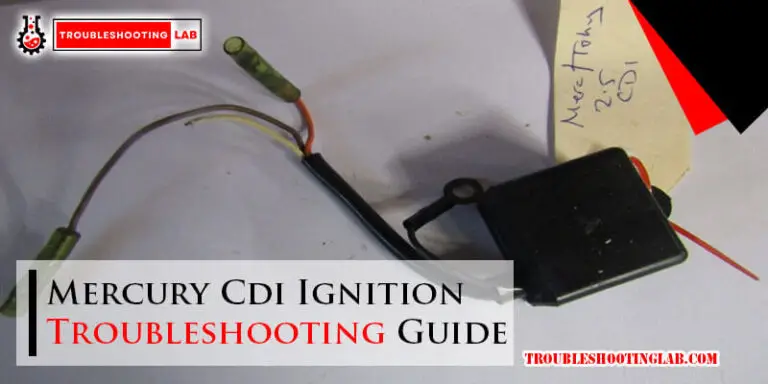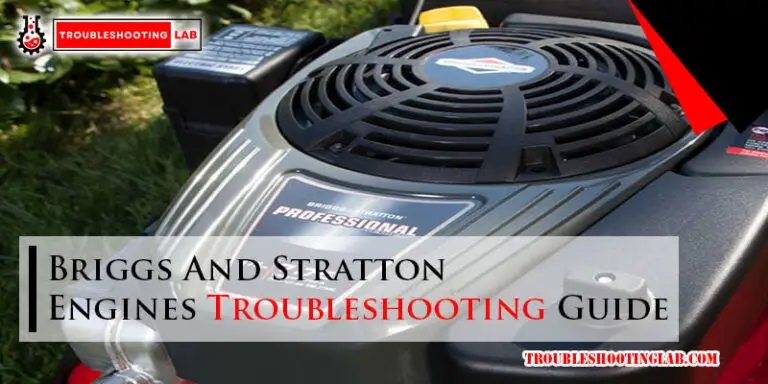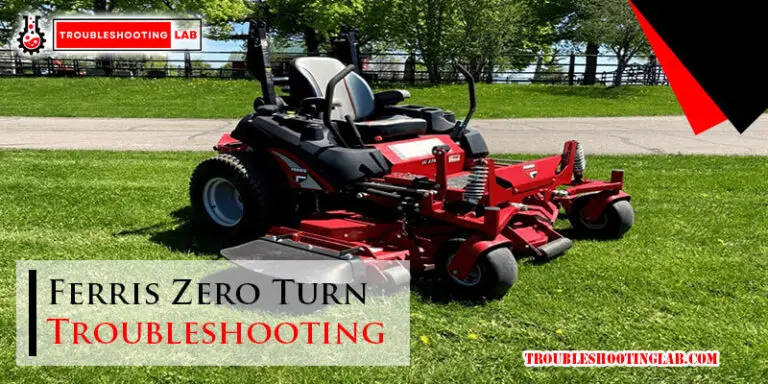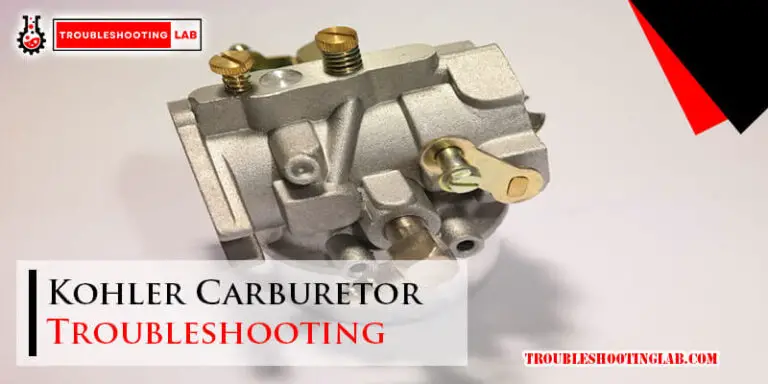Mantis Tiller Troubleshooting Guide: Solve Common Issues Fast
Mantis tillers are reliable garden tools. But, like any equipment, they sometimes face issues.
In this troubleshooting guide, we’ll address common problems and solutions for Mantis tillers. Whether your tiller won’t start, stalls, or struggles with performance, this guide offers clear steps to get it running smoothly again. Mantis tillers are known for their efficiency, but even the best tools need occasional maintenance.
Understanding how to troubleshoot your tiller can save time, money, and frustration. Ready to get your tiller back in top shape? Let’s dive into the common issues and how to fix them.
Identifying Startup Problems
Experiencing startup problems with your Mantis Tiller can be frustrating. Understanding the root cause is the first step to getting your tiller up and running. This guide will help you identify common startup issues and provide simple solutions.
Engine Fails To Start
If the engine fails to start, several factors could be responsible:
- Check the fuel: Ensure the fuel tank is full and the fuel is fresh. Old fuel can cause starting issues.
- Inspect the spark plug: A dirty or damaged spark plug can prevent the engine from starting. Clean or replace it if necessary.
- Examine the air filter: A clogged air filter can restrict airflow, making it hard for the engine to start. Clean or replace the air filter.
- Verify the ignition switch: Ensure the ignition switch is in the “on” position.
Difficult Pull Cord
A difficult pull cord can make starting your tiller a challenge. Here are some potential causes:
- Check for obstructions: Ensure there are no obstructions around the pull cord mechanism.
- Lubricate the pull cord: A dry or rusty pull cord may need lubrication. Use a small amount of oil to ease the pull.
- Inspect the recoil starter: The recoil starter may be damaged or worn out. Check for broken parts and replace them if needed.
- Examine the flywheel: A damaged flywheel can make the pull cord difficult to operate. Inspect and replace the flywheel if necessary.
Credit: archive.org
Addressing Engine Issues
The Mantis Tiller is a reliable gardening tool. But, like all machines, it can face engine problems. This guide helps you solve common engine issues.
Engine Stalls
If your tiller engine stalls, first check the fuel. Old or contaminated fuel can cause stalls. Replace it with fresh fuel.
- Check the fuel filter. A clogged filter can restrict fuel flow.
- Inspect the air filter. A dirty air filter can choke the engine. Clean or replace it.
- Examine the spark plug. A worn-out spark plug can cause stalls. Replace it if needed.
Engine Runs Rough
A rough-running engine can be frustrating. Start by checking the carburetor. An improperly adjusted carburetor can cause rough running.
- Clean the carburetor. Use a carburetor cleaner to remove debris.
- Check the fuel lines. Look for cracks or leaks that can affect performance.
- Inspect the ignition coil. A faulty coil can cause misfires. Replace it if necessary.
| Problem | Possible Cause | Solution |
|---|---|---|
| Engine stalls | Old fuel | Replace with fresh fuel |
| Engine runs rough | Dirty carburetor | Clean the carburetor |
Regular maintenance is key to keeping your Mantis Tiller running smoothly. Always use fresh fuel and clean filters.
Handling Fuel Problems
Fuel problems can cause your Mantis Tiller to malfunction. Understanding how to handle these issues can help you keep your tiller running smoothly. Here, we will discuss two common fuel-related problems: Fuel Line Blockages and Incorrect Fuel Mix.
Fuel Line Blockages
A blocked fuel line can prevent fuel from reaching the engine. This can cause the tiller to start poorly or not start at all. To check for blockages, follow these steps:
- Turn off the tiller and allow the engine to cool.
- Inspect the fuel line for visible blockages or kinks.
- Remove the fuel line and blow through it to clear any debris.
- Reattach the fuel line securely.
If debris is present, clean the line thoroughly. Sometimes, replacing the fuel line is necessary.
Incorrect Fuel Mix
Using the wrong fuel mix can damage your tiller’s engine. Mantis Tillers typically require a specific fuel-to-oil ratio. Here’s how to ensure you have the correct mix:
- Check the tiller’s manual for the recommended fuel-to-oil ratio.
- Measure the fuel and oil accurately.
- Mix the fuel and oil in a clean container.
- Shake the container well to ensure a proper mix.
Using fresh, high-quality fuel is crucial. Old or contaminated fuel can harm the engine. Always store fuel in a cool, dry place away from direct sunlight.
| Problem | Solution |
|---|---|
| Blocked Fuel Line | Inspect and clean or replace the fuel line. |
| Incorrect Fuel Mix | Use the correct fuel-to-oil ratio and fresh fuel. |
Fixing Tiller Tines
Having trouble with your Mantis Tiller tines? This guide will help you fix common issues. Read on to learn how to address problems like tines not spinning or tines getting jammed.
Tines Not Spinning
If your tiller tines are not spinning, there could be several reasons. Here are steps to troubleshoot this issue:
- Check the Drive Belt: A loose or broken belt can cause the tines to stop spinning. Open the belt cover and inspect the belt. If it is damaged, replace it.
- Inspect the Clutch Cable: Ensure the clutch cable is properly adjusted. A loose cable will prevent the tines from engaging. Tighten or replace the cable if needed.
- Examine the Tine Shaft: Debris or rust on the tine shaft can cause it to jam. Clean the shaft thoroughly and lubricate it with oil.
- Engine Issues: A malfunctioning engine can also affect the tines. Check for fuel, spark plug, and air filter issues.
Tines Jammed
If your tines are jammed, follow these steps to resolve the issue:
- Turn Off the Tiller: Always turn off the tiller before attempting any repairs.
- Clear Debris: Remove any rocks, roots, or debris stuck in the tines. Use a stick or tool to avoid injury.
- Check for Bent Tines: Bent tines can cause jamming. Inspect each tine and straighten or replace any that are bent.
- Lubricate Moving Parts: Apply oil to the tine shaft and other moving parts. This helps prevent rust and keeps the tines moving smoothly.
- Tighten Loose Bolts: Loose bolts can cause the tines to misalign. Check and tighten all bolts on the tine assembly.
By following these steps, you can fix common issues with your Mantis Tiller tines. Regular maintenance and inspection can help prevent these problems from occurring.
Resolving Throttle Issues
The throttle on your Mantis Tiller plays a key role in its operation. If the throttle is not working, your tiller may not run properly. Below are some common throttle issues and how to resolve them.
Throttle Not Responding
If the throttle on your Mantis Tiller is not responding, it can be frustrating. Here are some common causes and solutions:
- Inspect the Throttle Lever: Ensure the lever moves freely.
- Check the Spring: The spring should be intact and provide tension.
- Clean the Throttle: Dirt and debris can block movement.
Throttle Cable Problems
The throttle cable connects the lever to the engine. If it is damaged, the throttle may not work. Follow these steps to troubleshoot cable issues:
- Examine the Cable: Look for any visible damage or wear.
- Check Cable Connections: Ensure the cable is connected securely at both ends.
- Lubricate the Cable: Use a cable lubricant to ensure smooth operation.
- Replace the Cable: If damaged, replace the cable with a new one.
By following these steps, you can resolve common throttle issues with your Mantis Tiller.
Checking Electrical Components
Inspecting electrical components is crucial in the Mantis Tiller troubleshooting guide. Check wires, connections, and fuses for any signs of damage or corrosion.
Your Mantis Tiller may experience issues if its electrical components fail. Faulty electrical parts can prevent the tiller from starting. This guide will help you check and fix common electrical problems.Spark Plug Issues
A faulty spark plug can cause starting problems. First, remove the spark plug. Check for any signs of wear or carbon buildup. Clean the spark plug with a wire brush if it’s dirty. Replace it if there are any cracks or damage. Also, check the spark plug gap. It should be set according to the manufacturer’s specifications. Use a feeler gauge to measure and adjust the gap if needed.Ignition Coil Problems
The ignition coil supplies power to the spark plug. If your tiller won’t start, the coil might be faulty. Disconnect the spark plug wire and use a multimeter to test the coil’s resistance. Compare the reading to the manufacturer’s specifications. If the resistance is too high or too low, replace the ignition coil. Check all connections for corrosion or loose wires. Secure any loose wires and clean any corroded terminals. “`Maintaining Air Filters
Maintaining air filters in your Mantis Tiller is crucial. It ensures the machine runs smoothly and efficiently. Clean air filters prevent dirt and debris from entering the engine. This keeps the engine healthy and extends its lifespan. Regular maintenance also improves fuel efficiency and reduces emissions.
Clogged Air Filters
Clogged air filters can hinder your tiller’s performance. They restrict airflow, causing the engine to work harder. This results in poor fuel efficiency and decreased power. To check for clogs, remove the air filter cover. Inspect the filter for dirt and debris. If it appears dirty, it needs cleaning or replacement.
Replacing Air Filters
Replacing air filters is a simple task. First, remove the air filter cover. Take out the old filter. Insert a new, clean filter in its place. Ensure it fits snugly. Secure the cover back on. Regularly replacing filters keeps your tiller in top shape. It prevents engine damage and ensures optimal performance.

Credit: www.ebay.com
Lubrication And Maintenance
Lubrication and Maintenance are essential for keeping your Mantis Tiller running smoothly. Proper care extends the life of your equipment. It ensures optimal performance, reducing the likelihood of breakdowns. This section will guide you through the necessary steps to maintain and lubricate your tiller effectively.
Lubricating Moving Parts
Regular lubrication of moving parts is crucial. It prevents wear and tear. For best results, use a high-quality lubricant. Here are the steps:
- Identify all moving parts: Tines, shafts, and bearings.
- Clean the parts to remove dirt and debris.
- Apply lubricant generously. Ensure it covers all surfaces.
- Wipe off any excess lubricant to avoid attracting dirt.
Lubricate your tiller after every 10 hours of use. This ensures all parts function smoothly.
Routine Maintenance Tips
Routine maintenance keeps your tiller in top shape. Follow these simple tips:
- Check the Air Filter: Clean or replace it every 25 hours of use.
- Inspect the Spark Plug: Check for wear. Replace if necessary.
- Examine the Fuel System: Ensure there are no leaks. Use fresh fuel.
- Clean the Tines: Remove any entangled debris after each use.
- Tighten Loose Screws: Regularly check and tighten any loose screws or bolts.
Perform these checks regularly. They ensure your tiller operates efficiently.

Credit: www.amazon.com
Frequently Asked Questions
How Do I Start My Mantis Tiller?
Check the fuel level. Ensure the switch is on. Pull the cord gently.
Why Won’t My Mantis Tiller Start?
It might be a fuel issue. Check the spark plug and clean the air filter.
How Do I Fix A Tiller That Won’t Stay Running?
Inspect the carburetor. Clean or replace it if needed. Ensure proper fuel mix.
What Should I Do If My Tiller Vibrates Too Much?
Check for loose parts. Tighten bolts. Inspect tines for damage and replace if needed.
How Often Should I Service My Mantis Tiller?
Service it every 25 hours of use. Check oil, air filter, and spark plug regularly.
Conclusion
Resolving Mantis Tiller issues can be simple with the right guidance. Regular maintenance prevents most problems. Always check fuel, spark plugs, and filters. Clean parts to ensure smooth operation. Follow the manual for specific troubleshooting steps. With these tips, your tiller will run efficiently.
Happy gardening with your well-maintained Mantis Tiller!





